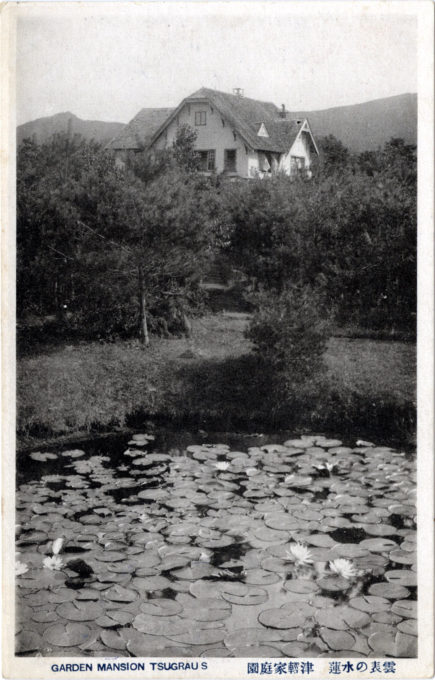
Tsugaru garden mansion, c. 1930. Traditionally one of the poorest and remotest areas of Japan, Tsugaru, in Aomori Prefecture, is best known as the birthplace of writer Osamu Dazai, one of Japan’s foremost fiction writers, who wrote the semi-autobiographical travelogue Return to Tsugaru: Travels of a Purple Tramp (1944) about his travels around the Tsugaru peninsula.
“In late 19th century, the landlord Kitarou Sasaki, who lived in Goshogawara, became the richest person of Aomori prefecture. Katarou Sasaki, who had lived in Goshogawara and been third richest person of Aomori prefecture, constructed a huge mansion in 1896. He spent 10 years to construct his huge mansion. This mansion was called ‘Nunoka Goten’ which was one of the three biggest mansion of northeastern territory of Japan .
“It was in Honcho, Goshogawara city. It had 12,000 square meters plottage, and the mansion itself measured 3000 square meters in size. It contained the room both a ‘Golden room’ and a ‘Silver Room’, entirely decorated respectively with gold leaf or silver leaf. Meanwhile, in Kanagi town, the landlord Tsushima family constructed another big mansion, later renamed ‘Shayoukan’ after WW2. Eminent author Osamu Dasai was born in this mansion in 1909.
“Meiji government recommended the propagation of a new type of production to boost the Aomori prefectural economy. The planting of occidental fruits had been recommended; eventually, the production of apples prospered. ‘Hiba’ (cypress wood) was being planted before the Meiji government was established. When a forest railway was in 1909, it stimulated a forestry industry with the Kanagi, Nakasato, and Shiura districts of the prefecture prospering as lumbering sites.
“Goshogawara city was small village until 1898. But the opening of ‘Gonousen’ railway in 1918 made Goshogawara town prosper as a distribution center.
“A wartime firebombing in November 1944 saw the conflagration of Goshogawara city. Almost all of the city (over 700 houses, officials, station, and post office) was destroyed by fire. In this time, Nunoka mansion also disappeared.”

